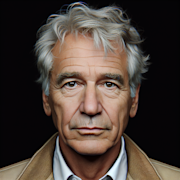Fitzcarraldo (1982)

Released in 1982, Fitzcarraldo is a film directed by the acclaimed German filmmaker Werner Herzog. The movie tells the story of a man named Brian Sweeney Fitzgerald, also known as Fitzcarraldo, who is determined to build an opera house in the Peruvian jungle. Fitzcarraldo is a visually stunning film that delves into themes of ambition, perseverance, and the clash of cultures. In this blog post, we will take a deeper look at this cinematic masterpiece and explore its impact on cinema and culture.
The Story
At the heart of Fitzcarraldo is the story of Fitzcarraldo, a dreamer and visionary who is willing to go to extreme lengths to achieve his goal of building an opera house in the Amazonian jungle. To finance his ambitious project, Fitzcarraldo hatches a plan to transport a massive steamship over a mountain to access a highly profitable rubber concession. The film follows Fitzcarraldo and his crew as they navigate treacherous waters and face numerous obstacles in their quest to realize his dream.
The Making Of
One of the most remarkable aspects of Fitzcarraldo is the behind-the-scenes story of its production. Werner Herzog famously insisted on filming the movie on location in the Amazon rainforest, eschewing the use of special effects in favor of authenticity. The production faced numerous challenges, including harsh environmental conditions, accidents, and delays. Perhaps the most iconic moment from the making of the film is the actual transportation of a 320-ton steamship over a hill, a feat that was accomplished without the use of special effects. This commitment to realism is a testament to Herzog’s dedication to his craft and his willingness to push the boundaries of filmmaking.
The Performances
Central to the success of Fitzcarraldo are the performances of its lead actors. Klaus Kinski delivers a tour de force performance as Fitzcarraldo, capturing his character’s manic energy and single-minded determination. Kinski’s on-screen presence is complemented by the performances of Claudia Cardinale as Molly, Fitzcarraldo’s supportive partner, and José Lewgoy as Don Aquilino, a local rubber baron who becomes entangled in Fitzcarraldo’s grand plan. The chemistry between the three leads elevates the film and adds depth to the characters’ relationships.
The Legacy
Fitzcarraldo has left an indelible mark on cinema and culture since its release in 1982. The film has been praised for its stunning visuals, innovative storytelling, and powerful themes. Werner Herzog’s uncompromising vision and commitment to authenticity have inspired generations of filmmakers to push the boundaries of their craft. Fitzcarraldo has also sparked discussions about cultural imperialism, ambition, and the human spirit. The film’s exploration of these themes continues to resonate with audiences around the world, cementing its status as a classic of world cinema.
Conclusion
In conclusion, Fitzcarraldo is a cinematic triumph that continues to captivate audiences over 40 years after its release. Werner Herzog’s ambitious storytelling, stunning visuals, and unforgettable performances have solidified the film’s place in the pantheon of great cinema. Fitzcarraldo is a testament to the power of the human spirit and the lengths to which we will go to pursue our dreams. Whether you are a fan of Werner Herzog’s work or simply appreciate bold and visionary filmmaking, Fitzcarraldo is a must-see film that will leave a lasting impression.

Desmond van der Walt
Journalist
More From Classics Authority Movies

Movie
The Lord of the Rings: The Two Towers (2002)

Movie
Tootsie (1982)

Movie
Dynamic Duos: Classic Movie Partnerships that Defined Chemistry

Movie
Annie Hall (1977)

Movie
Through the Lens of Hitchcock: The Master of Suspense's Cinematic Legacy

Movie
Butch Cassidy and the Sundance Kid (1969)





